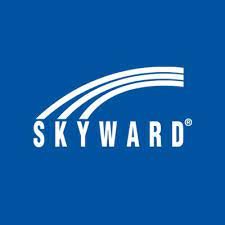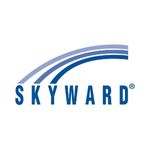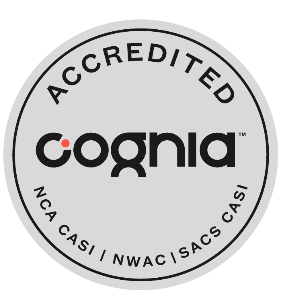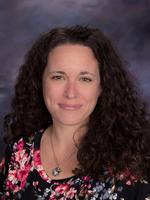ASSOCIATED ADMINISTRATIVE REGULATION:
300.04
ADOPTED:
8.8.2015
Copyright
Copyright is defined as “a form of protection provided by the laws of the United States for ‘original works of authorship’, including literary, dramatic, musical, architectural, cartographic, choreographic, pantomimic, pictorial, graphic, sculptural, and audiovisual creations. ‘Copyright’ literally means the right to copy but has come to mean that body of exclusive rights granted by law to copyright owners for protection of their work. Copyright protection does not extend to any idea, procedure, process, system, title, principle, or discovery. Similarly, names, titles, short phrases, slogans, familiar symbols, mere variations of typographic ornamentation, lettering, coloring, and listings of contents or ingredients are not subject to copyright.” (U.S. Copyright Office)
Fair Use
Fair Use is a legally defensible position that protects the use of some copyrighted material under some circumstances. For example, copyrighted materials used for educational purposes within the classroom can sometimes be defended by Fair Use. Whether or not Fair Use can be claimed depends on:
- The nature of the work borrowed
- The amount of the work borrowed
- Whether or not the use of the work changes the original work’s value in the
marketplace
Some uses of copyrighted work that can be defended by Fair Use include:
- Commentary
- Search engines
- Criticism
- News reporting
- Parody
- Research
- Teaching
- Library archiving
- Scholarship
Public Domain
“A work of authorship is in the ‘public domain’ if it is no longer under copyright protection or if it failed to meet the requirements for copyright protection. Works in the public domain may be used freely without the permission of the former copyright owner.” (U.S. Copyright Office) All federal government works and “any work published in the United States before 1923 or works published before 1964 for which copyrights were not renewed” are in the Public Domain. (Stanford University Libraries)
Creative Commons
“Creative Commons is a nonprofit organization that enables the sharing and use of
creativity and knowledge through free legal tools… CC licenses let you easily change
your copyright terms from the default of ‘all rights reserved’ to ‘some rights reserved.’ Creative Commons licenses are not an alternative to copyright. They work alongside copyright and enable you to modify your copyright terms to best suit your needs.” (creativecommons.org)
Creative Commons licenses “…do not affect freedoms that the law grants to users of
creative works otherwise protected by copyright, such as exceptions and limitations to copyright law like fair dealing. Creative Commons licenses require licensees to get
permission to do any of the things with a work that the law reserves exclusively to a
licensor and that the license does not expressly allow. Licensees must credit the
licensor, keep copyright notices intact on all copies of the work, and link to the license from copies of the work. Licensees cannot use technological measures to restrict access to the work by others.” (creativecommons.org)
Portfolios
Some copyright exceptions are extended in the case of student and teacher portfolios:
- Multimedia works made by students may be retained indefinitely in portfolios
maintained by the student for job interviews, college applications, and other
purposes. - Educators may retain projects indefinitely in a portfolio for later personal use
purposes such as a tenure review or a job interview.
Distance Education
Because instruction in the 21st Century can be provided in online environments, all
CSD educators might be rightly classified as “Distance Educators.” Distance Educators have some, but not all of the rights listed in the “What can I do in the classroom” column below. A course taught using a website that is in a closed, password-protected environment (e.g. Canvas) has more rights to use copyrighted material than an open, non-password-protected website (e.g. Weebly). Even a course taught through a website like Canvas does not have the same rights to use copyrighted material as a teacher does when in a regular, physical classroom.
“The TEACH Act authorizes us to digitize works for use in digital distance education, but only to the extent we are authorized to use those works in Section 110(2), and so long as they are not available digitally in a format free from technological protection… Fair use is almost always going to be the best source of authority for making copies in any context, but especially in conjunction with statutes like 110(2) that give us specific authorization that may not be sufficient in a particular case.” Visit the TEACH Act website for more information.
Copyright Guidelines in Specific Mediums
Printed Material
Definition: Books, Poems, Websites, Bulletin Boards, PDFs, Consumables, Posters, Lyrics, Periodicals, Sheet Music
What can I do in the classroom?
- Copies may be made only from legally acquired originals.
- Only one copy allowed per student.
- Teachers may make copies in nine instances per class per term.
- Usage must be “at the instance and inspiration of a single teacher,” i.e., not a directive from the district.
- Don’t create anthologies.
- “Consumables,” such as workbooks, may not be copied.
- Poems less than 250 words or a 250-word excerpt of poem greater than 250 words
- Articles, stories, or essays less than 2,500 words
- Excerpt from a longer work (10 percent of work or 1,000 words, whichever is less)
- One chart, picture, diagram, or cartoon per book or per periodical issue
- Two pages (maximum) from an illustrated work less than 2,500 words, e.g., a children’s book
- Teachers may make multiple copies for classroom use, and incorporate into multimedia for teaching classes.
- Students may incorporate text into multimedia projects.
- Copies from the Master is allowed by purchaser only for students use. Master copies may not be reproduced.
- Unmodified material can be posted on bulletin boards if left in original form.
What can I do publicly (e.g., websites, social media, public performance)?
- Make It Yourself – Any printed materials you create yourself belong to you.
- Public Domain – Any printed materials in the Public Domain may be freely used.
- Written Permission – If express written permission is granted by the copyright holder, you may use their work.
- Creative Commons – CC offers alternatives to traditional copyright licenses.
- Pay for Copyright – If you pay the copyright holder you may obtain permission to use their work.
Video
Definition: DVDs, Videotapes, Online Videos, Digital Video Files, Streamed Online Videos (e.g. Netflix, Hulu)
What can I do in the classroom?
- Teachers may use these materials in the classroom for instructional purposes
- Copies of videos owned by the teacher may be made for archival purposes or to replace lost, damaged, or stolen copies.
- Students and teachers may use portions (10 percent or three minutes, whichever is less) of lawfully acquired copyrighted motion media in their academic multimedia.
- Copying is allowed only if replacements are unavailable at a fair price or in a viable format.
- The material must be legitimately acquired: a legal copy (not bootleg) or home recording.
- Copyright works included in multimedia projects must give proper attribution to copyright holder.
- Video can not be used for entertainment purposes, rewards, or indoor recess unless the District has the public performance license. Destiny, principals, and school media specialist have listings of licensed videos.
What can I do publicly (e.g., websites, social media, public performance)?
- Make It Yourself – Any video you create yourself belong to you.
- Public Domain – Any video in the Public Domain may be freely used.
- Written Permission – If express written permission is granted by the copyright holder, you may use their work.
- Creative Commons – CC offers alternatives to traditional copyright licenses.
- Multimedia Software – Many software programs contain clips that you are free to use as long as you own a license to the software.
- Pay for Copyright – If you pay the copyright holder you may obtain permission to use their work.
Audio
Definition: Music, Podcasts, Records, Cassettes, CDs, Digital Audio Files
What can I do in the classroom?
- Up to 10 percent of a copyrighted musical composition may be reproduced, performed, and displayed as part of a multimedia program produced by an educator or students.
- A maximum of 30 seconds per musical composition may be used.
- Audio must have an educational purpose.
- Legally-acquired, age appropriate, or no-rating audio may be used in public
performance within the classroom (face to face) as a teaching tool but not in public or for profit.
What can I do publicly (e.g., websites, social media, public performance)?
- Make It Yourself – Any audio materials you create yourself belong to you.
- Public Domain – Any audio materials in the Public Domain may be freely used.
- Written Permission – If express written permission is granted by the copyright holder, you may use their work.
- Creative Commons – CC offers alternatives to traditional copyright licenses.
- Multimedia Software – Many software programs contain sound clips that you are free to use as long as you own a license to the software.
- Pay for Copyright – If you pay the copyright holder you may obtain permission to use their work.
Illustrations and Photographs
Definition: Logos, Clip Art, Fonts, Photos (Digital and Print), Graphics, Cartoons, Illustrations
What can I do in the classroom?
- Single works may be used in their entirety, but no more than five images by a single artist or photographer may be used.
- From a collection, not more than 15 images or 10 percent (whichever is less) may be used. Although older illustrations may be in the public domain and don’t need permission to be used, sometimes they’re part of a copyright collection.
- Reproduction of any form of copyrighted or syndicated cartoon characters is prohibited.
What can I do publicly (e.g., websites, social media, public performance)?
- Make It Yourself – Any illustrations and photographs you create yourself belong to you.
- Public Domain – Any illustrations and photographs in the Public Domain may be freely used.
- Written Permission – If express written permission is granted by the copyright holder, you may use their work.
- Creative Commons – CC offers alternatives to traditional copyright licenses.
- Multimedia Software – Many software programs contain images that you are free to use as long as you own a license to the software.
- Pay for Copyright – If you pay the copyright holder you may obtain permission to use their work.
Computer Software, Mobile Apps, Web Applications
Definition: Computer Programs, Downloaded Software, iOS/Android Apps, Web 2.0 Tools, Google Apps, Licensed Software, Site Licenses
What can I do in the classroom?
- Library may lend software to patrons.
- If licensing allows, the purchaser may share the license with multiple users.
- Follow the licensing restrictions and guidelines
- Libraries may make copies for archival use or to replace lost, damaged, or stolen copies if software is unavailable at a fair price or in a viable format.
What can I do publicly (e.g., websites, social media, public performance)?
- Follow the licensing restrictions and
guidelines. - “Creators of freeware and shareware encourage users to copy and share their offerings with others. People can download these programs for free and freely send them to friends. Some artwork, graphics, music, and videos on the Internet are free for anyone to use. But the majority of software programs, computer games, music and video files, artwork, and graphics cannot be legally copied and shared. Most are protected by copyright.” – See more at: http://www.ciconline.org/Resource/digital-ethics-section-5#sthash.g8KxrVwp.dpuf
Television and Radio Broadcasts
Definition: Broadcast (e.g., ABC, NBC, CBS, UPN, PBS, and local stations), Cable (e.g., CNN, MTV, HBO), Videotapes made of broadcast and cable TV programs, Streaming Radio (e.g., iTunes Radio and Pandora)
What can I do in the classroom?
- Broadcasts or recordings made from broadcasts may be used for instruction.
- Cable channel programs may be used with permission. Many programs may be retained by teachers for years. See Cable in the Classroom (www.ciconline.org) for details.
- Schools are allowed to retain broadcast recordings for a maximum of 10 school days. (Enlightened rights holders, such as PBS’s Reading Rainbow, allow for much more.)
- Cable programs are technically not covered by the same guidelines as broadcast television.
What can I do publicly (e.g., websites, social media, public performance)?
- Make It Yourself – Any broadcasts you create yourself belong to you.
- Public Domain – Any broadcasts in the Public Domain may be freely used.
- Written Permission – If express written permission is granted by the copyright holder, you may use their work.
- Creative Commons – CC offers alternatives to traditional copyright licenses.
- Pay for Copyright – If you pay the copyright holder you may obtain permission to use their work.
This online presentation is an electronic representation of the Canyons School District’s currently adopted policy manual. It does not reflect updating activities in progress. The official, authoritative manual is available for inspection in the office of the Superintendent located at 9361 South 300 East Sandy, UT 84070.








